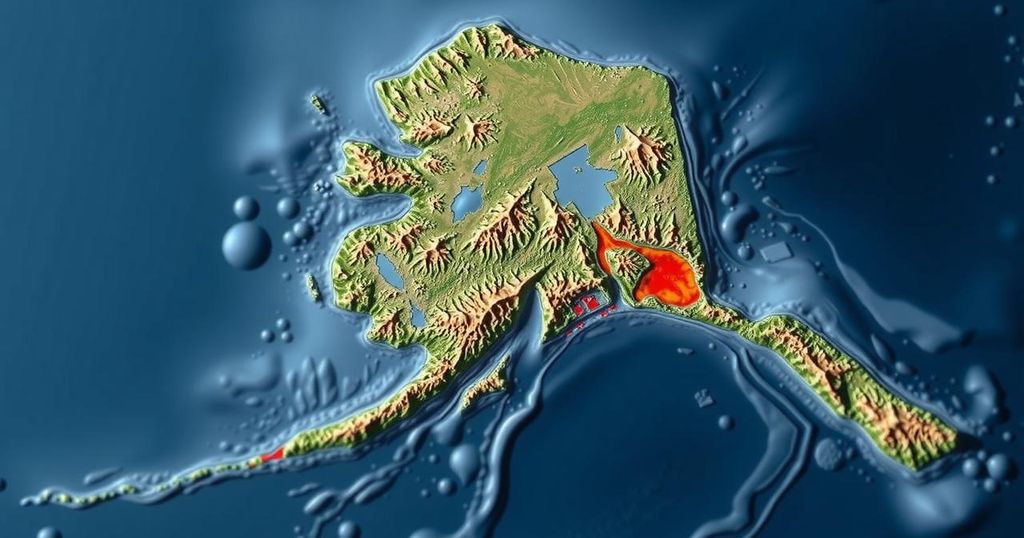A magnitude 1.7 earthquake struck 45 miles NW of Tatitlek, Alaska, on November 6, 2024, at a depth of 9.9 miles. This region is known for diverse tectonic activities, including events from the subducting Pacific Plate. Major earthquakes in the area, like the 1964 Great Alaska Earthquake, highlight the importance of ongoing seismic monitoring to mitigate risks to local communities.
On November 6, 2024, a magnitude 1.7 earthquake occurred approximately 45 miles northwest of Tatitlek, Alaska, at 2:48 AM AKST (11:48 AM UTC). The seismic event was recorded at a depth of 9.9 miles (16 km) but has not yet been reviewed by a seismologist. This earthquake’s location places it 45 miles west of Valdez and 76 miles east of Anchorage, amidst the extensive tectonic complexity of the region that is known for its numerous seismic activities. Southcentral Alaska experiences earthquakes from various tectonic features. Notably, major seismic events are often associated with the megathrust fault resulting from the subduction of the Pacific Plate beneath the North American Plate. The region is characterized by a variety of seismic phenomena, including intermediate-depth seismicity from the Wadati-Benioff Zone and crustal seismicity due to local faults. Significant earthquakes that have impacted the region include the 1964 M9.2 Great Alaska Earthquake and more recent events such as the 2016 M7.1 Iniskin and the 2018 M7.1 Anchorage earthquakes. The tectonic landscape of Southern Alaska includes major faults and geological structures capable of generating substantial earthquakes. Studies reveal several sources of crustal seismicity, specifically through the Cook Inlet basin’s faults, the Castle Mountain Fault, and a diffuse seismic zone between these areas. Historical earthquakes, such as the 1933 M6.9 earthquake in Anchorage, are attributed to these structures. It is essential to continue monitoring such seismic activities, especially given the potential for significant impacts on local communities and infrastructure.
The seismic activity in Southcentral Alaska is influenced by various tectonic mechanisms. The region’s earthquake characteristics stem from the interaction between the subducting Pacific Plate and the continental North American Plate. This interaction produces numerous seismic events due to complex geological structures and dynamic movements. Understanding these tectonic settings is vital for assessing earthquake risks in the densely populated areas surrounding Anchorage and other nearby cities, which have experienced both historic and recent seismic events that caused extensive damage.
In summary, the recent magnitude 1.7 earthquake near Tatitlek serves as a reminder of the persistent seismic activity in Alaska, driven by multiple tectonic features and faults. The region has a history of impactful earthquakes, necessitating continuous monitoring and research. Understanding the mechanisms behind these seismic events can help in enhancing preparedness and minimizing damage in vulnerable areas.
Original Source: earthquake.alaska.edu






